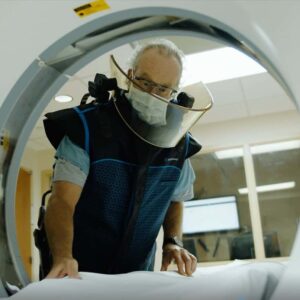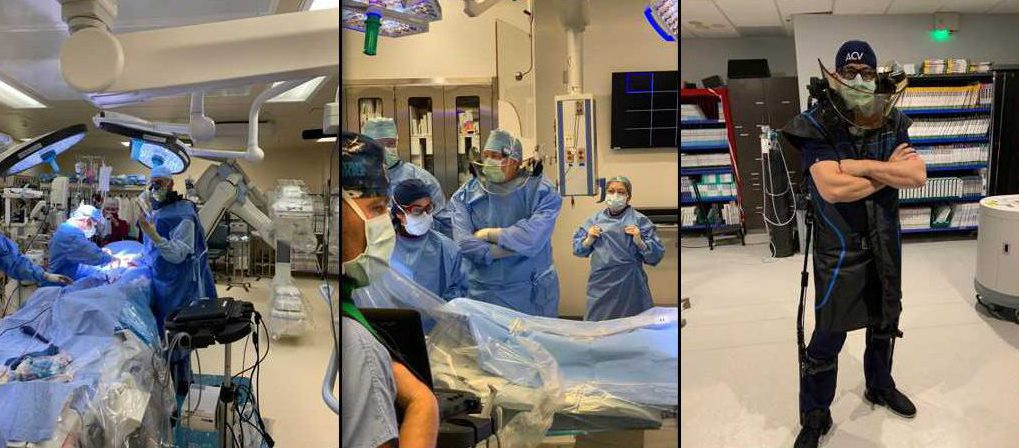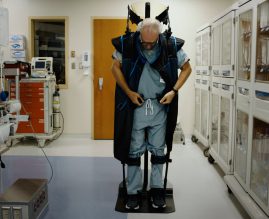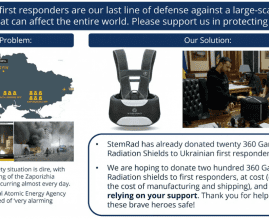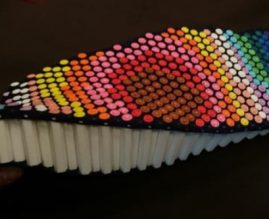Fluoroscopy Protection – How Does It Work?
01.14.24 | Sunday | Nofit Amir
Fluoroscopy is a form of radiation-based imaging technique that is used primarily in the medical field. In order to minimize exposure to radiation, fluoroscopy protection is highly important. There are a number of ways to protect personnel who use this technology to perform their tasks, thereby reducing exposure risks. We can get a clearer picture of the protective gear used for fluoroscopy by taking a closer look at this imaging technology itself.
What is fluoroscopy?
Fluoroscopy is a medical imaging technique that uses X-rays to create a moving image or a real-time image. This helps medical diagnosis, specifically where it is required to understand the movement of internal organs like the heart or gastrointestinal tract. X-rays are a form of ionizing radiation and there are potential risks with its use. However, when used at the right dosage according to the medical circumstances, the benefits outweigh the risks. This is a completely non-invasive test and helps doctors to chart the right diagnosis and treatment plans.
Why is fluoroscopy protection required?
Fluoroscopy uses low-intensity ionized radiation to conduct tests. These may be of very low dosages and are not likely to cause any major side effects in the long term. The fluoroscopy imaging operator – and anyone else from the medical team present in the room – is also exposed to the radiation. While they do not stand directly under the X-ray-emitting machine, they are still susceptible to at least 1/10th of the radiation particles directed at the patient. Medical teams like these are at greater risk due to long-term exposure. This is why wearing radiation protection is part of the protocol when using this imaging system.
Our technology – the specs
StemRad’s technology focuses on maximizing protection without compromising on comfort and mobility. The primary goal of radiation protection during fluoroscopy is radiation shielding. The medical team must be well-equipped in full personal protective gear while guiding the patient through the entire process and conducting the diagnostic tests. This usually involves using multiple components such as masks, aprons, specialized shoes, and gloves. And these are not just any kind of protective gear; they are lead-lined to prevent radiation from affecting the wearer.
StemRad has created revolutionary personal protective gear that offers optimal protection from radiation and a host of other benefits, too. Dubbed the ‘StemRad MD’, these benefits include:
- Full protection of the head, which also allows easy use of prescription glasses
- Greater coverage
- Comparatively lightweight to the user
- Enhanced ergonomics and better mobility
- Relief to the musculoskeletal system
The product specification is designed to offer radiation protection by keeping the exposure to the X-rays as low as reasonably achievable and maximizing protection without adding extra weight. Specifics of the fluoroscopy protection gear:
- Visor – 0.30 mm lead eq. (91.5% attenuation at 100 kVp). This protects from scattered radiation, doesn’t require wearing glasses, which allows the technician to wear prescription glasses easily and provides greater coverage of the head area.
- Integrated Thyroid Collar – 0.50 mm lead eq. (97.2% attenuation at 100 kVp).
- Expanded Protection – 0.50 mm lead eq. on both front and sides. 1.0 mm lead eq. in the front overlap area.
- Proprietary Exoskeleton – Removes up to 100% of the weight from the user’s body, which allows for seamless mobility and functionality without the added weight of the protective gear.
How to use fluoroscopy protection
Radiation shielding being the primary criterion for fluoroscopy protection, the only way to ensure 100% coverage and protection is to follow all the protocols that come with the equipment. One way is to have a system for everyone to follow while putting on the gear and when removing it. There should also be regular quality checks of the imaging system to ensure its correct working and prevent any radiation-based mishaps.
What are the side effects of fluoroscopy protection, if any?
Wearing fluoroscopy protection is not likely to cause any side effects when using StemRad’s equipment. With traditionally-used radiation protection outfits, the user is likely to face hip and joint issues, as moving around in heavy lead-lined gear is unwieldy and ill-suited to free movement. Improper use can increase the risk of radiation exposure, which in the long-term can cause cataracts and/or some forms of cancer. Radiation burns are also a possibility. StemRad considers all these factors at the early design stage, resulting in a superior-quality shield that is made for protection as well as comfort and mobility.
Who can use fluoroscopy protection gear?
Anyone who has to use a fluoroscopy machine can use the protective gear. Medical teams should not operate these radiation-emitting systems without wearing suitable shielding. In fact, they should always follow the three most important steps when it comes to potential exposure to radiation: time, distance, and shielding. All medical staff that is present during fluoroscopy imaging should minimize the amount of time spent in the radiation field. Staff members must also ensure to keep a certain distance away from the source of radiation, even while wearing protective apparel. Before entering the radiation zone, they should check that they are fully protected.
Apart from the gear for radiation protection, one can also wear a personal dosimeter on the wrist, torso, or neck to check the amount of radiation exposure.
Why is StemRad’s protection gear the best solution?
StemRad’s protection gear for fluoroscopy and other kinds of radiation exposure within the medical field is not just innovative but a radical shift in design. Physicians and healthcare providers who work under such conditions require all the protection possible. Personal protection apparel that is radiation-proof has, for long, been difficult to wear and move around in. Goggles prevent wearing prescriptive glasses, while masks with no airflow can fog up the goggles. Again, the skeletal and skin health of medical personnel can take a turn for the worse due to the heavy gear and improper shielding materials. Since StemRad’s products have been created keeping the end user’s comfort and mobility in mind, with absolutely no compromise on the aspect of radiation protection, this is definitely the best solution available to medical teams that use fluoroscopy imaging.
Frequently Asked Questions
What is a fluoroscopy used for?
Fluoroscopy is a type of medical imaging that uses a continuous X-ray beam to make a real-time video of movement inside the body. It can be used for both diagnostic radiology and interventional procedures, such as image-guided surgery.
Is fluoroscopy safe?
The radiation dose received by the patient during fluoroscopy varies depending on the individual procedure, with generally higher doses delivered during longer procedures. The probability of developing complications such as skin burns or cancer is statistically minimal and the benefits of undergoing a fluoroscopy procedure usually far outweigh the radiation risk.
How much radiation is in a fluoroscopy?
The radiation dose received by the patient during fluoroscopy varies depending on the individual procedure, and can range from 2 - 50 mSv.
What is the best protection against fluoroscopy?
Lead aprons are the most effective personal radiation protection in a clinical setting and should be worn by everyone in a fluoroscopy room.

Writes content for StemRad’s website, social media, and newsletter. She is an advocate with over twenty years of experience of writing high-end content in academic and industrial settings.
